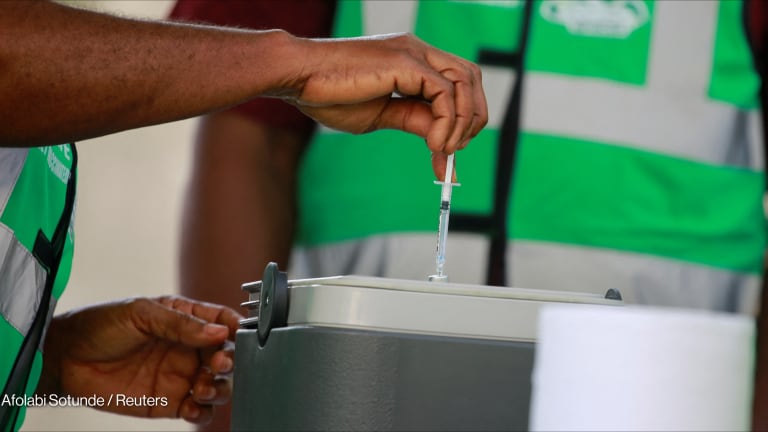
BARCELONA — After months of lockdowns and restrictions, which saw all but essential eye services put on hold, eye hospitals and clinics in some countries are preparing to reopen but grappling with the challenges of doing so in the midst of the COVID-19 pandemic.
It is a tough situation for these organizations, many of which have struggled over the last months to make ends meet and avoid staff layoffs, said Rahul Ali, vice president of Orbis International’s Asia and Africa programs. Now, reopening facilities are having to adapt how they operate, which can involve additional costs.
For many organizations, particularly smaller NGOs with fewer resources, one of the biggest challenges has been digesting the numerous guidelines from different bodies, such as the World Health Organization and the International Agency for the Prevention of Blindness, as well as national protocols, Ali said. There are a lot of questions around what personal protective equipment, hygiene measures, and infrastructure modifications are needed to operate safely, he added.
The challenge is that new evidence is emerging and changing those guidelines and best practices frequently, Ali said, so organizations need to be aware of how dynamic this situation is.
“We’ve recommended to partners [that] you must be aware of local guidelines and local governance compliances issues,” he said. “[Then the] international best practices you want to apply should be over and above that.”
How COVID-19 is impacting vision work
Devex finds out how the new coronavirus is affecting vision and eye care services and explores opportunities for experts to provide support in the pandemic response.
And organizations must remember that safety and reducing transmission of the coronavirus is the priority first and foremost. “Everything you do, you have to keep safety top of mind — [that’s] safety for patients, their attendants who are coming in, and for your staff.”
In helping facilities prepare for reopening, Orbis has hosted a series of online webinars that are designed not just for ophthalmologists and other clinical staff members but also the people who are actually running the hospitals. These personnel will play a critical role in resuming services safely but can sometimes be overlooked, Ali said.
As well as following national guidelines, Devex finds out what advice Ali and his team have for clinics and hospitals as they reopen.

Utilize staff expertise on infection control
It is important for all staff members to be well versed in infection prevention and hygiene practices, including simple techniques such as putting on and removing gloves properly, Ali said. There have been a lot of questions from partners around safe practices for handling and donning PPE, he added.
Many clinical staffers will already have expertise in these areas, particularly those who have worked during other health emergencies. “It’s about safe practices regardless of a pandemic, and the staff we have trained ... anesthetists, the technicians, the nurses — all of those skills have actually come in really handy in this pandemic,” Ali said. Experienced staff members can lead trainings, share their knowledge with teammates, and ensure there are opportunities to practice the various techniques.
In the hospitals where it works, Orbis has also introduced a quality management system in which an infection control nurse is always on duty and can act as the dedicated clinician for that facility, Ali said.
“Everything you do, you have to keep safety top of mind — [that’s] safety for patients, their attendants who are coming in, and for your staff.”
— Rahul Ali, vice president of Asia and Africa programs, Orbis InternationalConsider staff scheduling
Simple scheduling strategies in which staff members are split up into two or three teams and work different shifts can reduce potential virus transmission and ensure hospitals and clinics can keep running, Ali suggested. If a staff member tests positive for the coronavirus, that team can be quarantined without having to shut down the whole facility.
It is also important, where possible, to stagger the times that personnel are in the hospital. That way, if a staff member has come into contact with the virus, their body has time to show symptoms before they return to work, Ali said.
Staff members should also be screened for COVID-19 symptoms when they arrive at work, and PPE should be used appropriately, especially with any equipment that brings staffers in close contact with patients, such as slit lamps for eye examinations. Here, protective masks with a face shield must be used and a plexiglass shield can be inserted into the lamp to prevent air exchange, Ali said. Some facilities are also repositioning their examination equipment so that it sits on the threshold of the room and reduces the need for patients to actually enter.

Manage patient inflow
Screening patients before they enter a facility is important, but over and above that, hospitals and clinics must also try to stagger the inflow of people. This is particularly critical since the sanitization of equipment and seats between each patient increases the turnover time, Ali noted.
Traditionally, many of Orbis’ partner organizations have operated with a walk-in system instead of taking appointments, which could potentially result in a rush of patients at one time based on local transport, he said. Clinics are now being encouraged to address this and ensure social distancing through simple restructuring of patient waiting areas. And in an air-conditioned environment, windows should be opened every couple of hours to allow for air circulation, Ali added.
Educate patients on new measures
Eye health care workers pivot to COVID-19 response
The new coronavirus has stopped the standard, day-to-day operations of The Fred Hollows Foundation. But health care personnel supported by the Australian vision nonprofit are finding ways to continue their work through COVID-19 prevention and treatment efforts.
Data from some of Orbis’ partners indicates that vision centers — often small facilities in rural areas where one or two technicians are on hand to carry out eye examinations and administer glasses — have seen greater demand since reopening than the bigger hospitals or secondary centers. This is, in part, due to the challenges that remain for many people in taking public transport to access urban facilities and the fears that still exist around visiting hospitals, including eye hospitals.
In general, most hospitals and clinics are not yet seeing surges in demand for services, according to Ali, and this has allowed them to implement appointment systems.

“Surgeries have been fairly manageable so far, but when things open up and we get used to the new normal, we might start seeing those surges,” Ali said. “The patient education process has already begun now to alert everybody that we are shifting to an appointment system and this is what you need to do before you come into the hospital.”
Many clinics are using WhatsApp and text messages to get the word out in communities about new appointment processes and what precautions patients can take before their visit and screening. The methods for patient education depend on the context and what channels will best reach the target population, Ali said. Community radio is being used in Zambia, for example, while these communications are being done in Bangladesh through text messaging, posters, and newspapers.
Make sure services are inclusive
The coronavirus pandemic has highlighted the disadvantages facing people with disabilities and other vulnerable groups, and these should not be overlooked in reopening eye hospitals and clinics, Ali stressed. “Eye health professionals and health professionals [need] to be aware and be attuned to the needs of people with disabilities and make our facilities and our staff more accessible for such people.”
Ali cited one eye care hospital in India that has set up mobile teams with two staff members each who travel by motorbike and, carrying only basic equipment, provide post-op care to patients unable to travel. This, he said, not only ensures that services reach those who need them most but also reduces crowds at hospitals.
Devex, with financial support from our partner Essilor, is exploring challenges, solutions, and innovations in eye care and vision. Visit the Focus on: Vision page for more.









